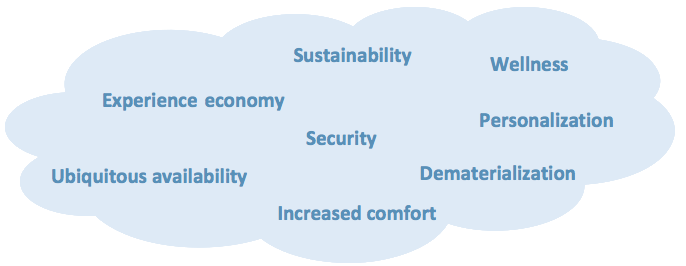How to patent use cases? Learn from the master class
The Master class of MIPLM (Master of Intellectual Property Law and Management) in February 2021 was about the patenting use cases. How to design use cases to make them patentable? Many people are confused of use cases and business models. A use case describes how a user or a system interacts with the solution to achieve a desired goal. Hence, it is drawn from an end user’s perspective. They describe the flow of events which are performed by the user to achieve the desired result. A use case can be seen as a list of actions or event steps typically defining interactions between an actor and a system to achieve a goal. The actor can be a human or other external system.
In contrast a business model is a holistic framework to define, understand and design a business. A business model describes the logical connections and the way in which a company generates value for its customers. A company can operate several business models at the same time. Within the business model the revenue model describes the structure of how a company generates revenue or income. Each customer segment can contain one or more revenue streams.
Cannot open the video? Please click: https://youtu.be/nN7lTDWKP6g
A digital business model can be defined as a business model that leverages digital technologies to improve several aspects of an organization which performs the business model. The digital technologies can be deployed at different aspects of the business model like the way how the company acquires customers and which products /services it provides, and the digital technology can help to enhance its value proposition.
Several digital business models can be operated in one digital use case. A digital business model can also extend over several digital use cases. Digital business models must be designed around digital use cases (customer needs, customer benefits, customer experience) in order to achieve the desired returns.
Cannot open the video? Please click: https://youtu.be/1CxYCUmd1PU
Megatrends and customer benefits in the music industry
In the music industry many megatrends are visible. Those trends exist for all companies, but different companies can use individual strategies and digital business models to react to them. In more detail they can identify digital use cases, in which they fulfil very specific customer benefits depending on their own core competencies. Those customer benefits can be very different for multiple companies, although they are addressing the same use case. Some of those Megatrends are:

Figure 1: Megatrends in the music industry. Source: Deloitte (2018): Smart Home Consumer Survey 2018; PWC (2019): Personalisierung und neue Technologien beflügeln Unterhaltungs- und Medienbranche; Bitkom (2020): Fact Sheet Musikstreaming; Kreutzer, R. (2017): Treiber und Hintergründe der digitalen Transformation;
Use cases in the music industry: Spotify vs Sonos
Examples for use cases in the music industry which are implemented can be found at very different companies, such as Spotify (a streaming service) and Sonos (a hardware manufacturer). They have very different core competencies and different starting positions to react on the digital transformation. Spotify has e.g. core competencies in the creation of personalized playlists and transmission of audio files, while Sonos has the competence to optimize the playback in multiroom audio systems. They fulfill the customer needs based on these core competencies in a very different way and need targeted IP to make their solution for chosen use cases exclusive and avoid imitation.
The company profiles of Spotify and Sonos are:
Spotify is a Swedish audio streaming and media services provider, launched in October 2008. Spotify offers via its digital streaming service copyright restricted recorded music and podcasts, including more than 60 million songs. As a freemium service, basic features are free with advertisements and limited control, while additional features, such as offline listening and commercial-free listening, are offered via paid subscriptions. Users can search for music based on artist, album, or genre, and can create, edit, and share playlists.
Sonos is an American developer and manufacturer of wireless home audio products, including smart speakers. Sonos offers Whole House Audio, i.e., to allow a household to play music from a variety of sources in multiple rooms simultaneously, so that different rooms may hear either the same music source in sync or different music sources. The products sold by Sonos work with the three major voice assistants: Amazon Alexa, Google Assistant, and Apple Siri.
Questions:
Group 1-2:
- Which of the Megatrends shown in Figure 1 are most relevant for Spotify?
- Which use cases can be used by Spotify to overcome the new digital challenges, which they are facing by the identified Megatrends?
- Please search for and identify IP rights, which are relevant for the protection of the following use cases and explain their relevance in the concrete use case.
Group 1: Use case: “Automated individual playlists and recommendations”
- Anahita AHOURAEI
- Audrey BASTARD
- Maria Daniela BOTTICELLI
- Valentine FAVROD
- Alexander GANGNUS
- Ivan GAUCI
- Jan GLUECKERT
Cannot open the video? Please click: https://youtu.be/B6E_vdKKSjE
Group 2: Use case: “Stable media playback in streaming”
- Nataliya HIRSKA
- Tobias LIPP
- Pierre LORIN
- Aurélie MESSIER
- Matthieu NORRANT
- Rudina Ann PESCANTE
Cannot open the video? Please click: https://youtu.be/w2CNStliSCU
Group 3-4
- Which of the Megatrends shown in Figure 1 are most relevant for Sonos?
- Which use cases can be used by Sonos to overcome the new digital challenges, which they are facing by the identified Megatrends?
- Please search for and identify IP rights, which are relevant for the protection of the following use cases and explain their relevance in the concrete use case.
Group 3: Use case: “Optimal and easy setup of speaker systems”
- Nicolas RENAUD
- Adrien RENOULT
- Martin REYNARD
- Ricardo RODRIGUEZ CORTASA
- Vijay SHELKE
- Christian SLISSE
Cannot open the video? Please click: https://youtu.be/pTSHIxAWTN4
Group 4: Use case: “Control of multiroom systems”
- Erica SMITH
- Russell THOM
- Rodrigo TRONCOSO
- Christine WALMSLEY-SCOTT
- Astrid WOOLLARD
- Xiaoqing ZHANG
Cannot open the video? Please click: https://youtu.be/OYdR5dfq8Ik



